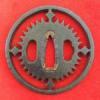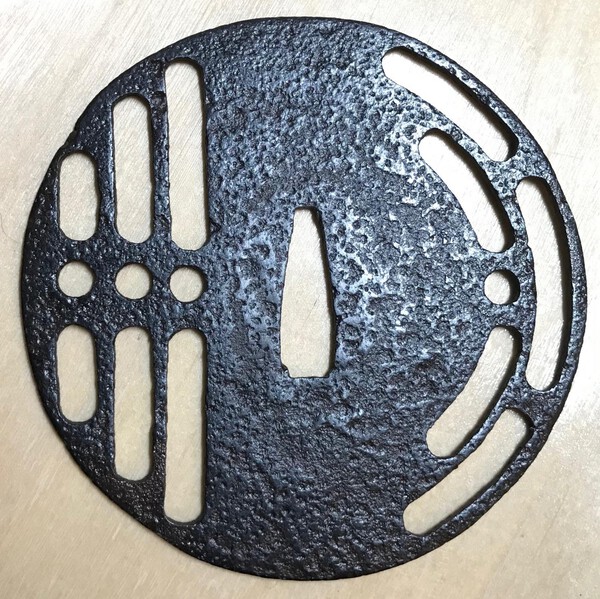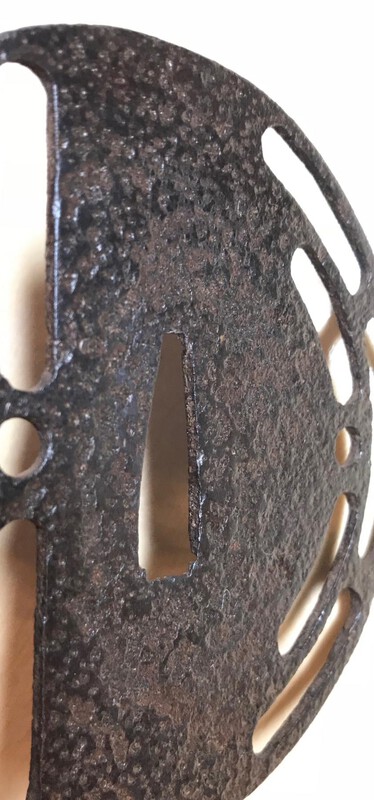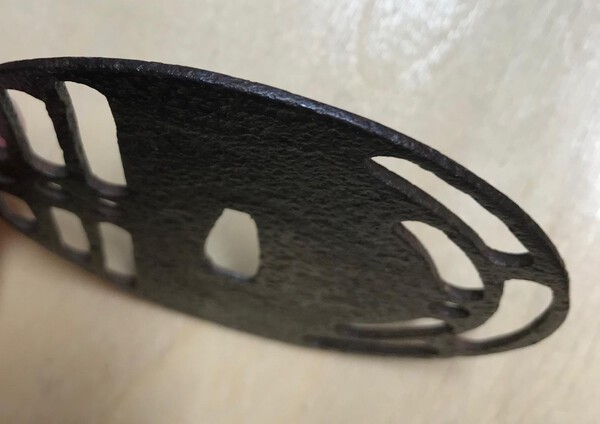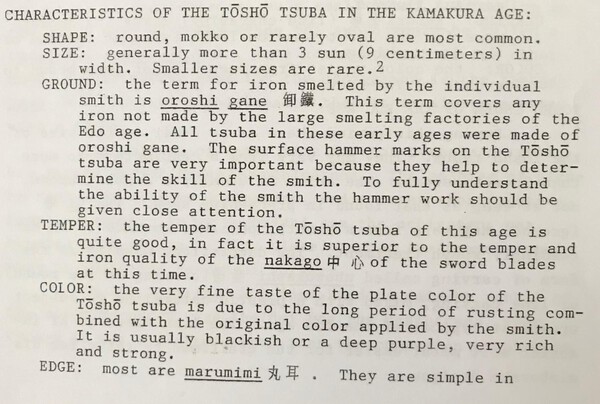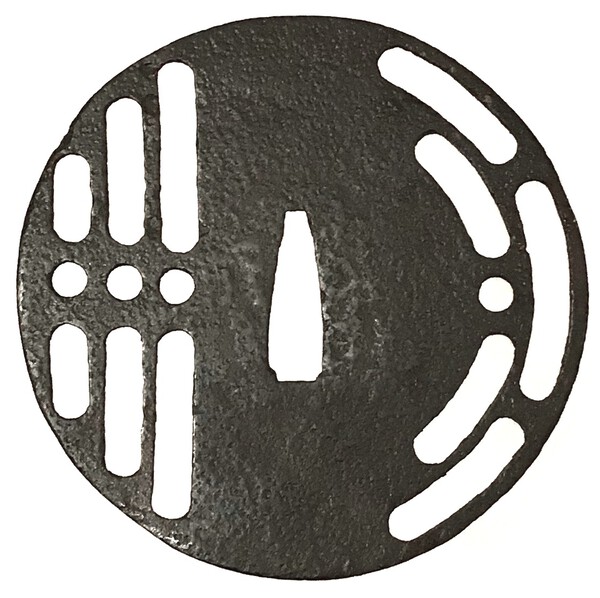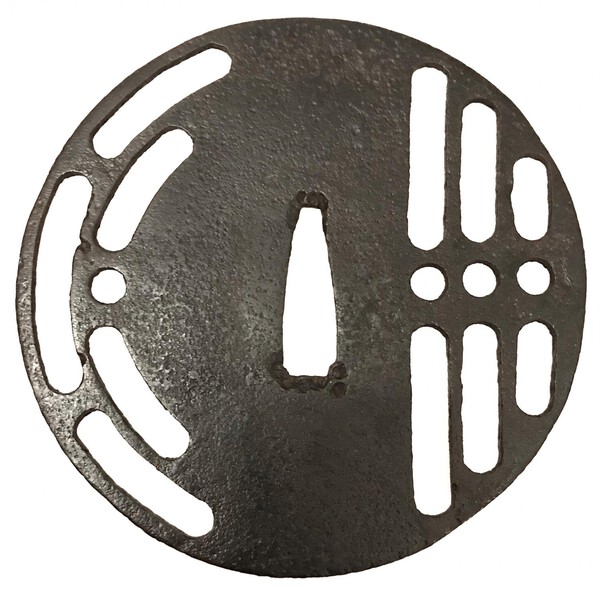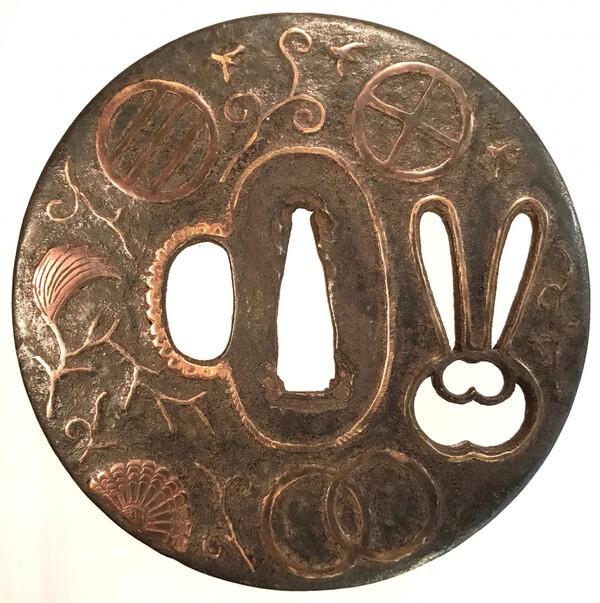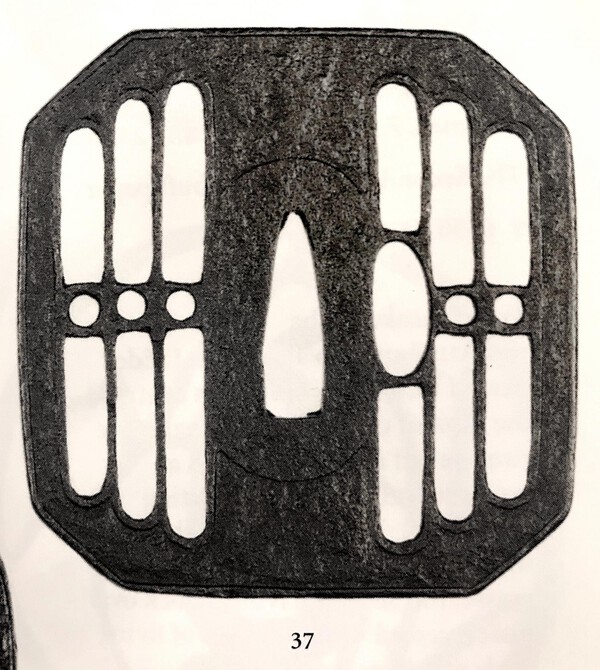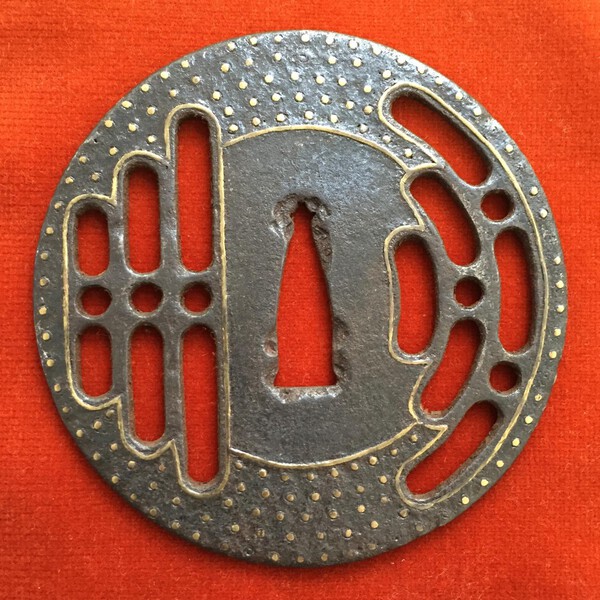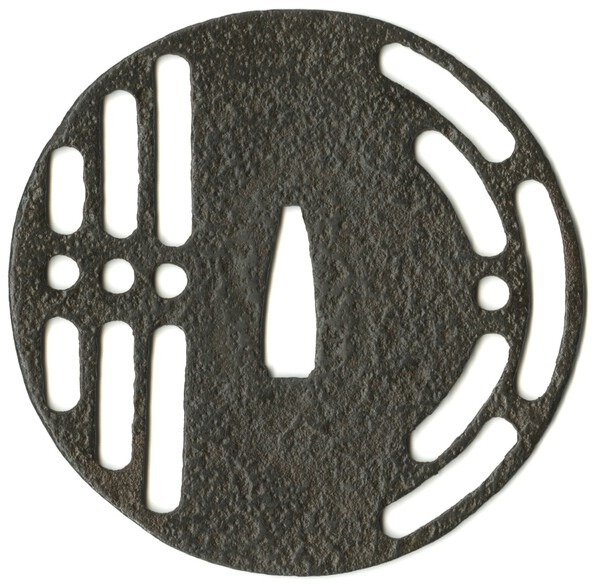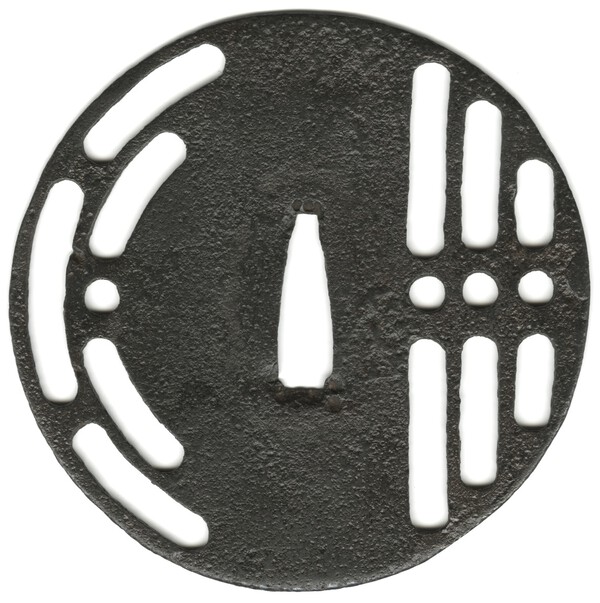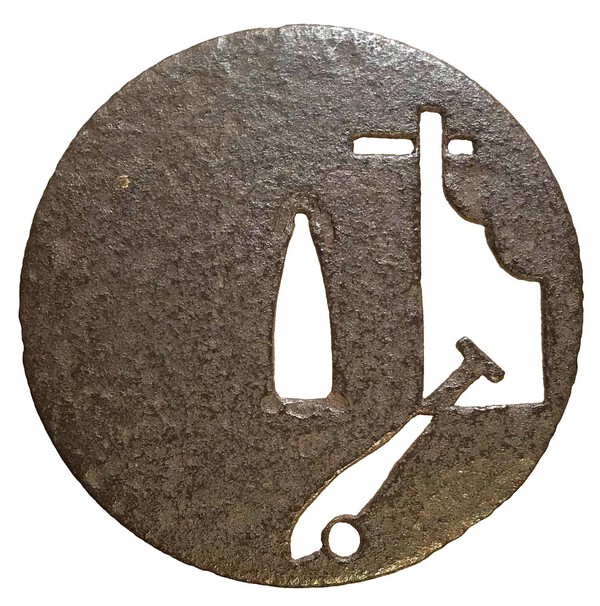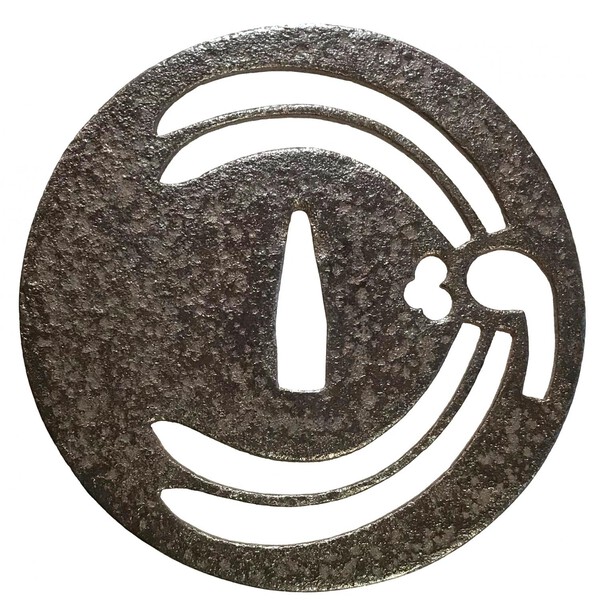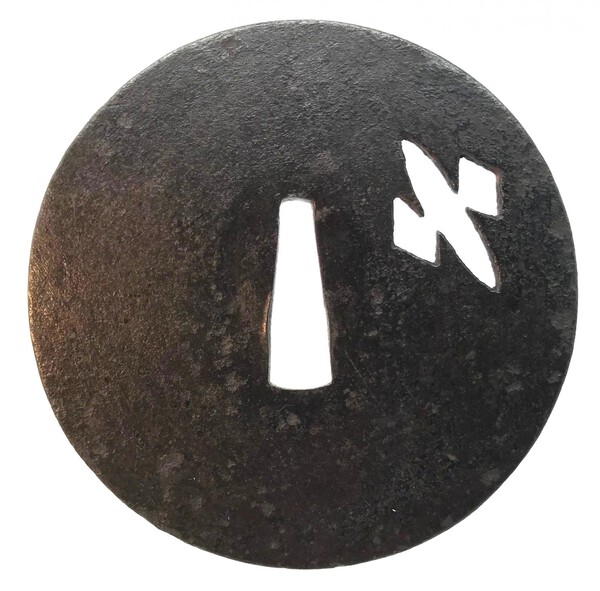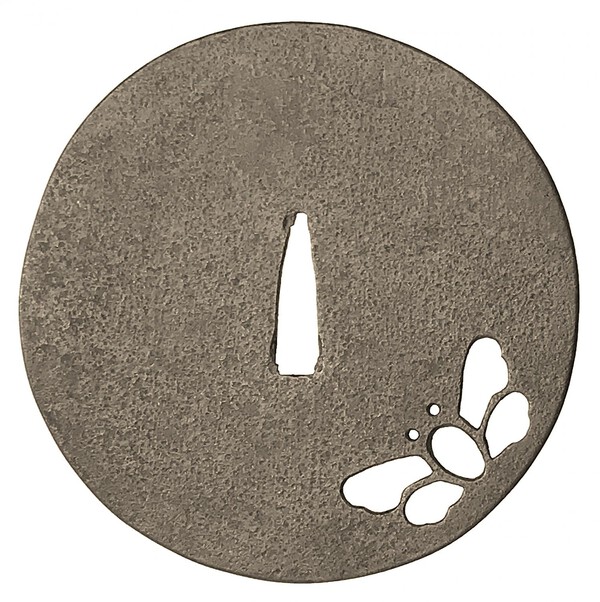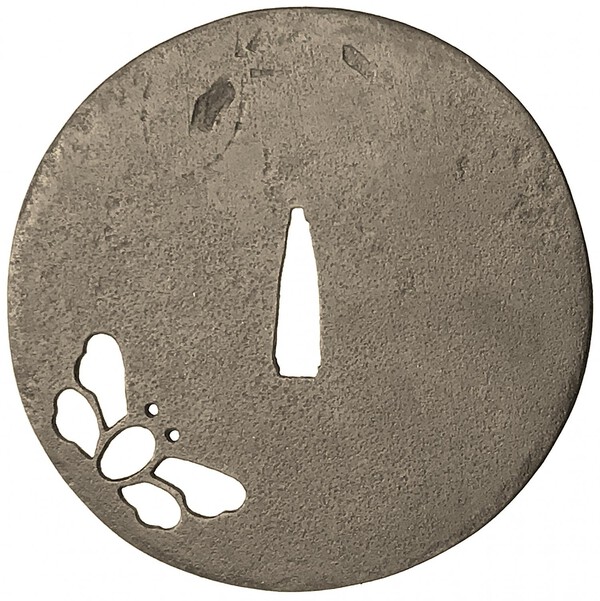-
Posts
172 -
Joined
-
Last visited
Content Type
Profiles
Forums
Events
Store
Downloads
Gallery
Everything posted by svarsh
-
Seems like Shiryūshi Masataka saku (支龍子正隆作) most plausible. The first was deciphered by Markus Sesko as 禾子保 - KA-NE YASU TAIRA (平). Rare signatures. Let me give you one more enigmatic inscription: What do you think? Best, Sergei
-
It's a strange tsuba with a signature that I need help with deciphering. Another one, not strange, but with a signature that I could not read. Thank you in advance. Sergei
-
Will bring it to Shinsa in August, will see... Before that I will treat it is a really old piece, and after - will see...
-
Yes, there is a lot of subjectivity in the book. Not only 'hard/soft' iron. If you look at most comparison tables, you will find that there is no hard evidence whatsoever regarding almost anything. It reminds my medical lectures: 'this symptom can be found here, or can be found there, or can not be found at all. What would you do though?
-
Additional pics of tsuba are here. And the pages about Tosho age too. Seems like we are all still in doubts. Any new thoughts with this additional info? Sergei
-
The argument between the Tosho and Katchushi is ongoing. I like Jim Gilbet's saying: “Traditionally the old iron plate tsuba are classified into Ko Tosho (old sword smith), and Ko Katchushi (old armor maker) styles. It is sometimes difficult to justify attribution of a given tsuba to the Tosho or Katchushi category. Generally guards with raised rims or relatively complex designs tend to be assigned to Katchushi. This is basically a convention we follow out of habit and convenience.” If one looked at tosho and katchushi specimens at Tsuba Kanshoki by Kazutaro Torogoye, 1975, he would be totally confused. I attached the photos to to this thread; they are more telling than the scans that I attached initially. The corrosion is not that uniform, and I would say - it's not a lot of rust, almost none. Though, the surface looks chiseled, or hammer-marked.
-
Fully agree. Tosho revival etc. Easily can be.
-
Yes Marius, it's a scan. The photos are here: I compared it with a Sasano 'certified' ko-tosho, and YES, it looks differently. Though, Sasano's is of Nanbokucho period, while I consider mine a Kamakura: larger plate, softer iron, etc. If real, of course. The dealer is a fair Japanese guy, though I do not know him in person. Anyway, look at the photos. Sergei
-
Chris, I have 15th century things that look like prototypes of the future designs. And in MET they have 2000 BCE stuff that look pretty modern too. The design of my piece is not in question. It was a few months ago, but not now. The question is the plate. And I know - it's hard to tell without having the piece in hands. E.g. look at this brother-rabbit . It is far from being modern... Sergei
-
the design and it's symmetrical arrangement are pretty old. Look at “Japanese Swords and Tsuba from the Professor A. Z. Freeman and the Phyllis Sharpe Memorial collections” / Sotheby’s, London, Thursday 10 April 1997; p. 18-19, lot № 37: “A Kamakura-bori Tsuba, Momoyama Period.” Exactly the same design. Some Chinese and Japanese very old designs look modern to us just because they we introduced to us relatively recently. Or this:
-
Johni, It may be a repair. No more pictures right now, I need to take them.
-
Well, I sent the one with a butterfly back to the seller and got my money back. Now, I've got another butterfly, this time with a dragonfly. Very large and very thin: 99.6 x 100.5 x 2.1 mm. Does this one looks like a real ko-tosho? Even as the Kamakura period piece or not? What do you think? Sergei
-
I think it's Tosho with no Ko. Good enough. Mid Muromachi, ok. Anyway, it's a real tsuba for a real weapon, not an Edo period show off. I think that everyone agree with that. Thanks for a good discussion. Serge
-
That's the word of the High Authority: "I am not sure if the Kamakura attribution by Sotheby is correct. I can understand their approach as such shallow linear carvings can be seen on Kamakura-bori works. But the two symmetrical hitsu-ana are quite atypical for this group as is such a large sukashi design. I too see the Masa character on your tsuba but I think that in this contect, the SHŌ reading applies for Shōami (正阿弥). Maybe it was once signed "Shōami saku". The interpretation would match for Shōami." - Markus Sesko. So, the Sotheby's guys (Specialist in Charge Neil Davey) was probably wrong with his attribution of Kamakura-bori. However, the piece fetched 1,840 GBP in 1994. I will not tell you how much I paid, but it a laughable amount of money.
-
Under unusually heavy peer pressure, I forced myself to go to Markus. He's brilliant, not questions! Sergei [P.S. It's hard to by shy, you know].
-
That's what we have: 1) A tsuba listed at Japanese Sword Fittings from the R. B. Caldwell Collection. Sale LN4188 "HIGO". Sotheby's, 30th March 1994, №15. "Kamakura-bori tsuba. Nambokucho period, late 14th century. 85 mm." 2) My recent acquisition, listed as Shoami (Edo period) in NBTHK This is tsuba: diameter 85.9 mm, thickness at seppa-dai 3.6 mm; weight: 79 g This is paper Now, this is not all. My tsuba seems to be signed. At least I see 止 But I see dead people as well. What do you think? Sergei
-
So far so good: The Tenpo era Tosho wannaby tsuba was sent back. The originator issued apologies. Now, two more pieces, that seem to be a Tosho from Muromachi period. Rudder: 90.0 x 89.0 x 2.3 (s-d), 2.1 (rim) Dragonfly: 95.0 x 93.6; thickness (careful): seppa-dai from 2.1 to 2.4, rim from 2.1 to 2.7 - a very uneven piece. Would love to hear what you think. Sergei
-
I don't mind the price, I just do not want to bother somebody of his standing. Google translate does not translate hand written signatures of Edo period Japanese.
-
Thanks. Markus is a too high authority. I would like to find somebody of lesser caliber.
-
I need a translator who will be able to translate texts on sword fittings, scrolls and woodblock prints. Signatures and not only. Please contact me to set prices, etc.
-
Jean, no, it was not sold to me as a ko-tosho and the price was not a ko-tosho. I agree with you.
-
The period spanned from December 1830 through December 1844. It is possible. Later? This is late enough to be considered a fake. My only excuse is that I paid a laughable amount of money. Still, the rule of only buying pieces with good provenance must be enforced on myself.
-
Alex, the tsuba you attached is a Kamakura-bori, not Tosho or ko-tosho (and it's from my own post, actually). The reference tsuba of Sasano #21 is interesting. "My" butterfly cut EXACTLY the same, but Sasano's tsuba is smaller 85.0 x 84.5 x 2.3 rim, 3.0 center. His tsuba is thicker in the center and thinner at the edge. Mine is more or less flat. It easily can be a replica. Too bad!
-
Thanks Henry. It's visible on photos that the surface is covered by hummer marks, it is not smooth. I compared the piece with a definite ko-tosho specimen (illustrated here), and remain in doubts. The age attribution is important. The seller said it's Momoyama, but it can be early Muromachi as well as mid-Edo. Any thoughts on this?
-
Tsuba looks like ko-tosho to me, but the box says 'Tenpo'. 98.4 mm x 98.8 mm x 2.3 mm; weight: 118 g. Any thoughts? Sergei


